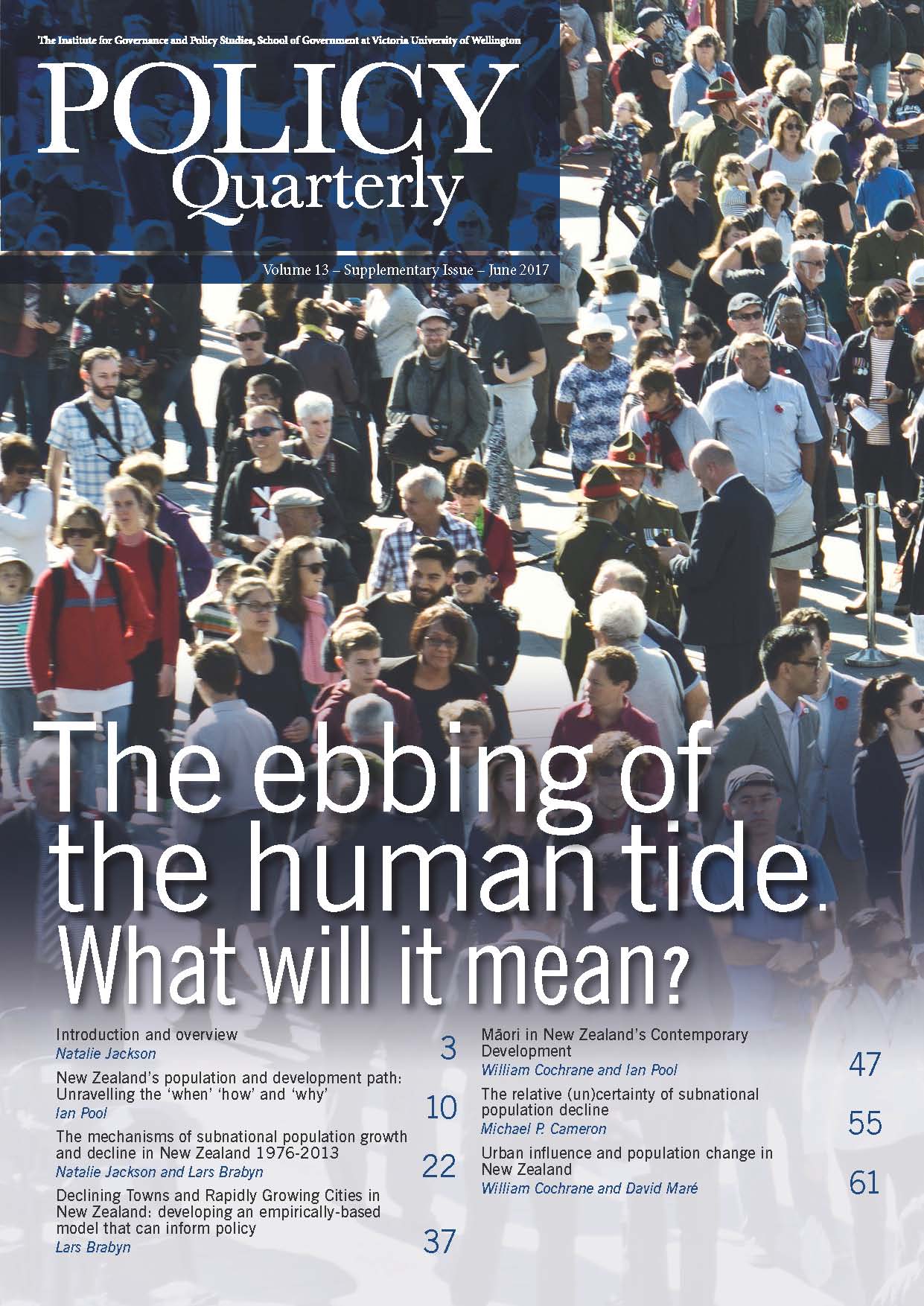Introduction and overview
DOI:
https://doi.org/10.26686/pq.v13i0.4554Keywords:
global demographic transition, population ageing, New Zealand’s total fertility rate, depopulation, New Zealand’s demographic regime, migration and the role of amenities, Māori development, urban influenceAbstract
Since its original formulation in the 1940s (Davis 1945; Notestein 1945), the phenomenon known as ‘the global demographic transition’ has been used to understand the trend of structural population ageing, and with it, the slowing and ultimately the ending of population growth – now anticipated globally around the end of the present century (Lutz, Sanderson & Sherbov 2004). However as originally conceptualised, the theory pertained to ‘closed’ populations, in which the only dynamics were births and deaths. Falling death rates cause populations to first become younger and to grow in size, while falling birth rates eventually cause them to become older, and growth to slow – the increased numbers of survivors at older ages becoming an increased proportion of the population (Coale 1972; Chesnais 1990).
Downloads
Downloads
Published
Issue
Section
License
Permission: In the interest of promoting debate and wider dissemination, the IGPS encourages use of all or part of the articles appearing in PQ, where there is no element of commercial gain. Appropriate acknowledgement of both author and source should be made in all cases. Please direct requests for permission to reprint articles from this publication to Policy-Quarterly@vuw.ac.nz.



